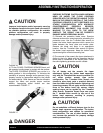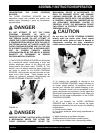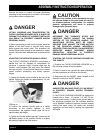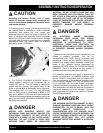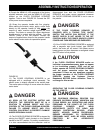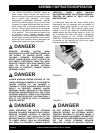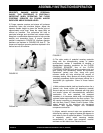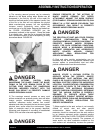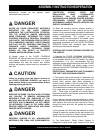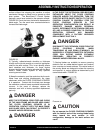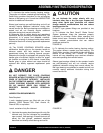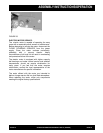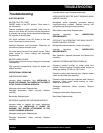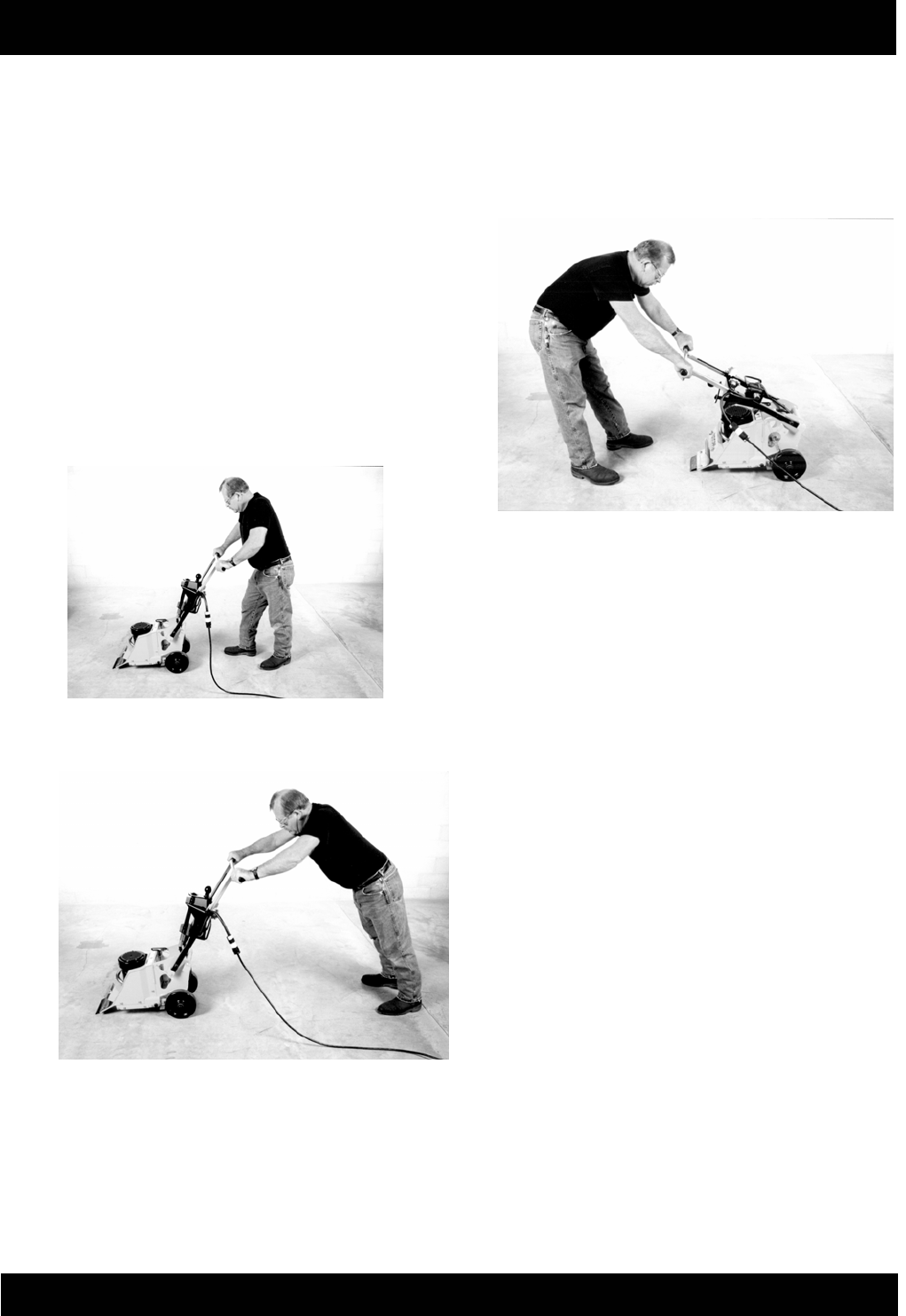
ASSEMBLY INSTRUCTIONS/OPERATION
SFCS-16 OPERATION AND PARTS MANUAL REV #4 (05/28/09) PAGE 25
PROPERTY DAMAGE AND/OR PERSONAL
INJURY. THIS PROCEDURE IS ESPECIALLY
IMPORTANT WHEN OPERATING THE FLOOR
COVERING SCRAPER ON FLOORS AND/OR
SURFACES ABOVE GROUND LEVEL.
3) Proper operator posture and stance will enhance
productivity rates and minimize fatigue. Adjust the
operator handle height to place the handle grips at
approximately waist level. Keep the upper body as
vertical as possible. This procedure will help to
maximize leverage and minimize back related stress.
Keep feet a comfortable distance apart to help provide
stability and locomotion force. A proper operator
position is depicted in FIGURE 25. Improper operator
positions are depicted in FIGURES 26 and 27. The
proper and improper operator positions depicted in this
manual are not all inclusive.
FIGURE 25
FIGURE 26
FIGURE 27
4) The wide variety of potential covering ma
terials
along with the corresponding variety of jobsite
environments, makes it impossible to develop a
standardized operating procedure for the FLOOR
COVERING SCRAPER. Use of the FLOOR
COVERING SCRAPER will require constant trial and
error testing until satisfactory results are achieved.
Experience, gained over time, along with good
common sense will help minimize the amount of
necessary testing. Many factors will directly affect the
operating parameters and/or techniques utilized for a
specialized job application. Some of these factors
include:
a) Work surface material yield and tensile values. As a
general rule, these values will determine material
removal rate per unit of time. Ma
terials with high yield
and tensile values will characteristically resist/limit
penetration. For such materials, the accepted
procedure is to decrease blade width and determine
optimum blade angle relative to the floor surface. This
will require increasing or decreasing the blade angle
with the Back Saver™ Blade Control System. Other
added benefits to this technique are decreased
vibration, less operator fatigue and increased
component service life.
b) Higher material removal rates can sometimes be
achieved by making a series of passes 90 degrees to
each other to form a waffle like pattern. This technique
is especia
lly useful when removing deeper
accumulations of rubber type materials, material
residues and dirt debris from industrial floors.




